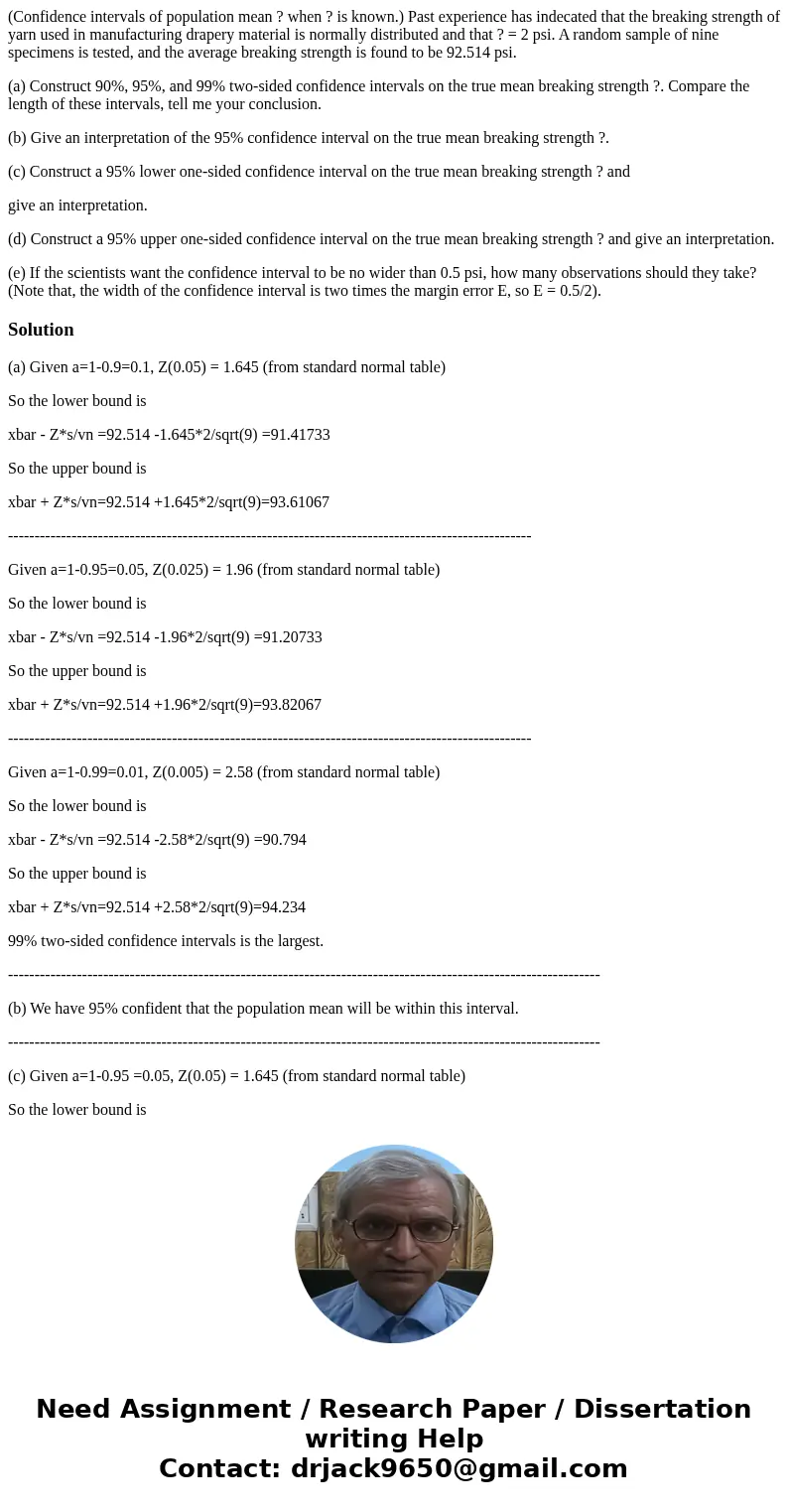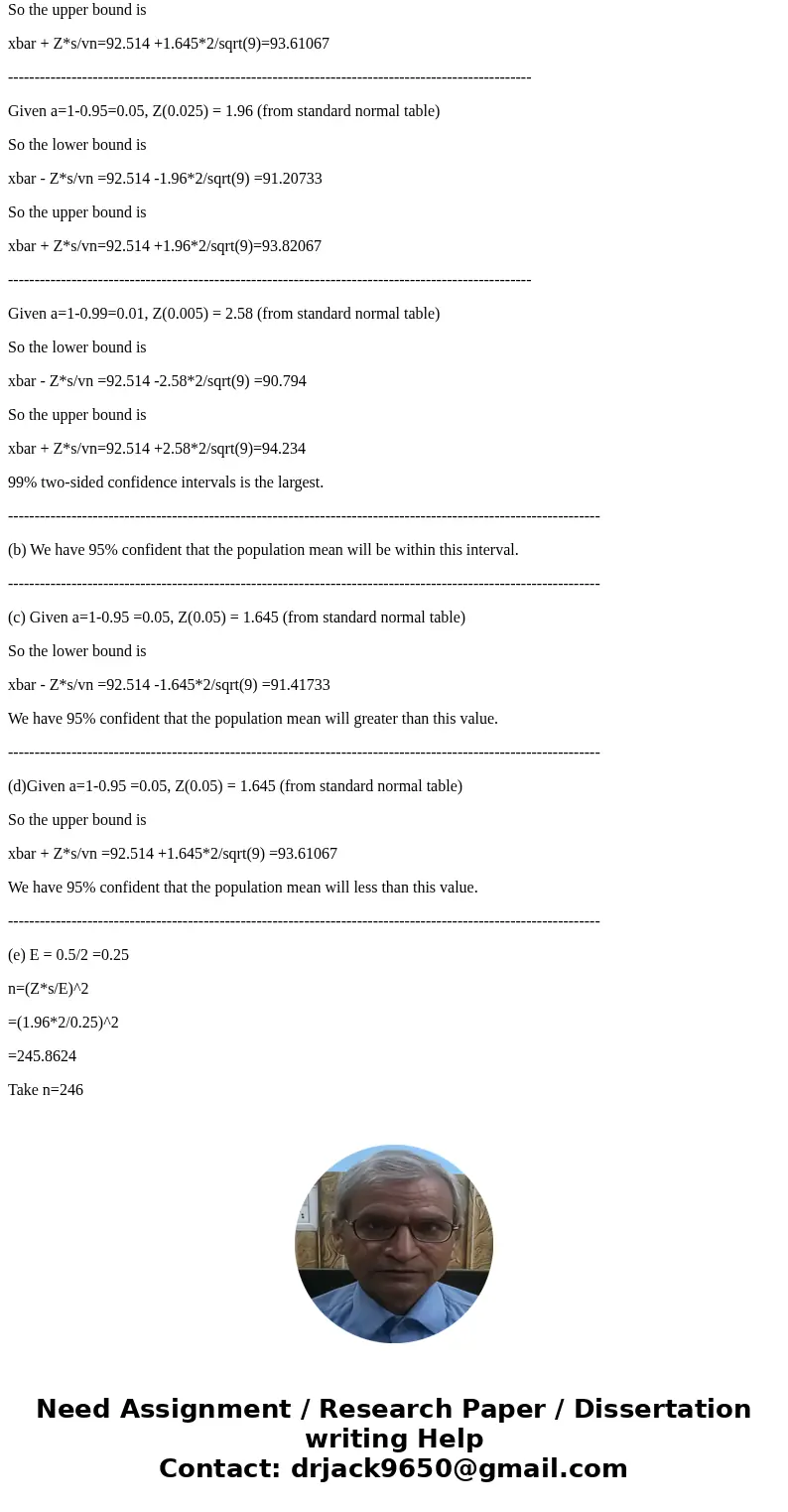Confidence intervals of population mean when is known Past
(Confidence intervals of population mean ? when ? is known.) Past experience has indecated that the breaking strength of yarn used in manufacturing drapery material is normally distributed and that ? = 2 psi. A random sample of nine specimens is tested, and the average breaking strength is found to be 92.514 psi.
(a) Construct 90%, 95%, and 99% two-sided confidence intervals on the true mean breaking strength ?. Compare the length of these intervals, tell me your conclusion.
(b) Give an interpretation of the 95% confidence interval on the true mean breaking strength ?.
(c) Construct a 95% lower one-sided confidence interval on the true mean breaking strength ? and
give an interpretation.
(d) Construct a 95% upper one-sided confidence interval on the true mean breaking strength ? and give an interpretation.
(e) If the scientists want the confidence interval to be no wider than 0.5 psi, how many observations should they take? (Note that, the width of the confidence interval is two times the margin error E, so E = 0.5/2).
Solution
(a) Given a=1-0.9=0.1, Z(0.05) = 1.645 (from standard normal table)
So the lower bound is
xbar - Z*s/vn =92.514 -1.645*2/sqrt(9) =91.41733
So the upper bound is
xbar + Z*s/vn=92.514 +1.645*2/sqrt(9)=93.61067
---------------------------------------------------------------------------------------------------
Given a=1-0.95=0.05, Z(0.025) = 1.96 (from standard normal table)
So the lower bound is
xbar - Z*s/vn =92.514 -1.96*2/sqrt(9) =91.20733
So the upper bound is
xbar + Z*s/vn=92.514 +1.96*2/sqrt(9)=93.82067
---------------------------------------------------------------------------------------------------
Given a=1-0.99=0.01, Z(0.005) = 2.58 (from standard normal table)
So the lower bound is
xbar - Z*s/vn =92.514 -2.58*2/sqrt(9) =90.794
So the upper bound is
xbar + Z*s/vn=92.514 +2.58*2/sqrt(9)=94.234
99% two-sided confidence intervals is the largest.
----------------------------------------------------------------------------------------------------------------
(b) We have 95% confident that the population mean will be within this interval.
----------------------------------------------------------------------------------------------------------------
(c) Given a=1-0.95 =0.05, Z(0.05) = 1.645 (from standard normal table)
So the lower bound is
xbar - Z*s/vn =92.514 -1.645*2/sqrt(9) =91.41733
We have 95% confident that the population mean will greater than this value.
----------------------------------------------------------------------------------------------------------------
(d)Given a=1-0.95 =0.05, Z(0.05) = 1.645 (from standard normal table)
So the upper bound is
xbar + Z*s/vn =92.514 +1.645*2/sqrt(9) =93.61067
We have 95% confident that the population mean will less than this value.
----------------------------------------------------------------------------------------------------------------
(e) E = 0.5/2 =0.25
n=(Z*s/E)^2
=(1.96*2/0.25)^2
=245.8624
Take n=246


 Homework Sourse
Homework Sourse